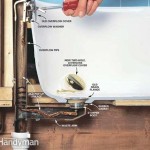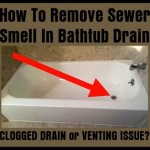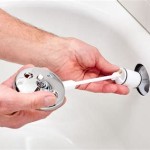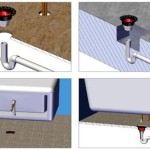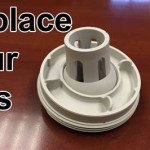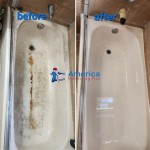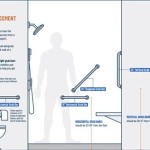How to Fix a Water Stopper in a Bathtub
A properly functioning bathtub water stopper is crucial for an enjoyable bathing experience. A malfunctioning stopper can lead to a slow or nonexistent drain, wasting water and potentially causing water damage. Addressing issues with the stopper promptly can prevent more significant plumbing problems and save on costly professional repairs. This article provides a comprehensive guide on how to diagnose and fix common problems with bathtub water stoppers.
Before beginning any repair, safety is paramount. Always turn off the water supply to the bathtub to prevent accidental flooding. This typically involves locating the shut-off valves, often found beneath the bathtub or in an accessible area near the plumbing lines. Once the water is off, gather the necessary tools. A basic set of tools for bathtub stopper repair usually includes: a screwdriver (both flathead and Phillips head), pliers, a small bucket or container, a flashlight, and potentially a plumber's snake or drain auger. If you are unsure where to locate the shut-off valves, it is recommended to consult a professional plumber before proceeding.
Identifying the Type of Stopper
Bathtubs utilize various types of stoppers, each with its own mechanism and potential failure points. Identifying the stopper type is the first step in troubleshooting the problem. Common types include:
Lift-and-Turn Stoppers:
These stoppers are operated by twisting the knob on the stopper itself. They typically have a linkage underneath the tub that connects the stopper to a lever that pivots and seals the drain opening.Push-and-Pull Stoppers:
Similar to lift-and-turn, these stoppers are activated by pushing down on the stopper to close and pulling up to open. The mechanism is similar, with a linkage beneath the tub controlling the drain sealing.Pop-Up Stoppers:
These stoppers are operated by a lever located on the overflow plate, often positioned below the faucet. The lever activates a linkage that lifts and lowers the stopper.Toe-Touch Stoppers:
These stoppers are activated by pressing down on the stopper with a toe or foot. Pressing it again releases the stopper to allow water to drain. The mechanism is located within the drain itself and often involves a spring-loaded system.Chain and Stopper:
This is a simple design where a rubber or metal stopper is attached to a chain. The chain is connected to a lever or ring that is used to manually place the stopper in the drain opening.Once the type of stopper is identified, proceed to diagnose the issue.
Troubleshooting Common Stopper Problems
Several common issues can cause a bathtub stopper to malfunction. These issues often stem from hair, soap scum, and other debris accumulating in the drain or interfering with the stopper's mechanism.
Slow Draining or No Drain:
This is often caused by a blockage in the drain. Hair is the most common culprit, but soap scum, mineral deposits, and other debris can also contribute. Begin by removing the stopper and visually inspecting the drain opening. Use a hooked tool or needle-nose pliers to remove any visible hair or debris. If the blockage is further down the drain, a plumber's snake or drain auger may be necessary. Carefully insert the snake into the drain opening and rotate it while pushing it further down. Once resistance is felt, continue rotating the snake to break up or grab the blockage. Slowly withdraw the snake, removing any debris that is attached. Repeat this process until the drain is clear.Stopper Not Sealing Properly:
If the stopper is not sealing the drain properly, water will slowly drain out of the tub. This can be caused by a few different factors. First, inspect the stopper itself for damage. Look for cracks, chips, or deformities in the rubber or plastic parts of the stopper. If the stopper is damaged, it will need to be replaced. If the stopper appears to be in good condition, the problem may be with the linkage or adjustment mechanism. For lift-and-turn, push-and-pull, and pop-up stoppers, the linkage beneath the tub can often be adjusted to improve the seal. Locate the adjustment screw or nut on the linkage and tighten or loosen it as needed. Test the stopper after each adjustment to see if the seal has improved. For toe-touch stoppers, the internal mechanism may be worn or damaged, requiring replacement of the entire stopper assembly.Sticking or Difficult to Operate:
If the stopper is sticking or difficult to operate, the problem may be due to corrosion, mineral deposits, or a lack of lubrication. Clean the stopper and surrounding area with a mild soap and water solution. Use a small brush or cloth to remove any build-up. For stoppers with a linkage, apply a small amount of silicone grease or plumber's grease to the moving parts. This will help to lubricate the mechanism and prevent it from sticking. Avoid using petroleum-based lubricants, as they can damage rubber or plastic components.Repairing Specific Stopper Types
The repair process varies depending on the type of stopper. Here's a breakdown of how to address common issues with specific stopper types:
Lift-and-Turn Stopper Repair:
To adjust a lift-and-turn stopper, locate the screw or nut on the linkage beneath the tub. This screw or nut controls the length of the linkage, which in turn affects how tightly the stopper seals against the drain opening. Loosening the screw will shorten the linkage, allowing the stopper to sit lower in the drain. Tightening the screw will lengthen the linkage, raising the stopper. Adjust the screw in small increments and test the stopper after each adjustment. If the stopper is still not sealing properly, the linkage may be bent or damaged and need to be replaced.Push-and-Pull Stopper Repair:
Similar to lift-and-turn stoppers, push-and-pull stoppers have an adjustment mechanism located on the linkage. Adjust the screw or nut to change the length of the linkage and improve the seal. If the stopper is sticking, try lubricating the moving parts with silicone grease. Inspect the stopper for damage and replace it if necessary.Pop-Up Stopper Repair:
Pop-up stoppers are often linked to the overflow plate by a vertical rod. To adjust a pop-up stopper, remove the overflow plate. You may need to unscrew a small screw to do this. Once the plate is removed, you will see the vertical rod and a series of holes. By repositioning the rod in a different hole; you can adjust the height of the stopper. Experiment with different positions until the stopper seals properly. If the rod is bent or damaged, it may need to be replaced. Also, check the horizontal linkage inside the drain pipe for blockage. This can sometimes be cleared with a bent wire or small brush.Toe-Touch Stopper Repair:
Toe-touch stoppers are generally the most challenging to repair. Due to their complex internal mechanism, they are often best replaced rather than repaired. To remove a toe-touch stopper, twist it counterclockwise. Once removed, inspect the mechanism for damage. If the stopper is simply clogged, try cleaning it with a brush and a mild detergent. However, if the stopper is damaged or worn, replace it with a new one. Ensure the replacement stopper is the correct size and type for the bathtub drain.Chain and Stopper Repair:
The chain and stopper type is straightforward to maintain. The main issues are related to the chain breaking or the stopper deteriorating. A broken chain can be easily replaced with a new chain, available at most hardware stores. A worn or damaged stopper should also be replaced. Ensure the replacement stopper is the correct size for the drain opening.After making any adjustments or repairs, thoroughly test the stopper. Fill the bathtub with a few inches of water and observe whether the water drains out. If the water holds, the repair was successful. If the water continues to drain, repeat the troubleshooting and repair steps until the problem is resolved.

Bathtub How Can I Remove A Stuck Bath Stopper Assembly Home Improvement Stack Exchange

How To Replace A Bathtub Drain Stopper Toe Touch

Diy How To Replace A Bathtub Drain Stopper With Common Household Tools
:max_bytes(150000):strip_icc()/stuck-trip-lever-drain-stopper-3973581-hero-8454a8f9235a46459c862ac6824124c8.jpg?strip=all)
How To Fix A Sticky Trip Lever Bathtub Drain Stopper

Bath Tub Trip Lever Stopper Replacement Or Adjustnment
:max_bytes(150000):strip_icc()/remove-tub-stopper-clear-a-drain-2718786-03-8a44cb29b73347d0bbd1528ffe968544.jpg?strip=all)
How To Remove 6 Diffe Kinds Of Drain Stoppers

How To Fix Problems With Your Bathtub Drain Stopper Dengarden

How To Remove A Bathtub Drain The Home Depot

Bathroom Repair How To A Pop Up Tub Drain Stopper

How To Fix Problems With Your Bathtub Drain Stopper Dengarden
Related Posts


